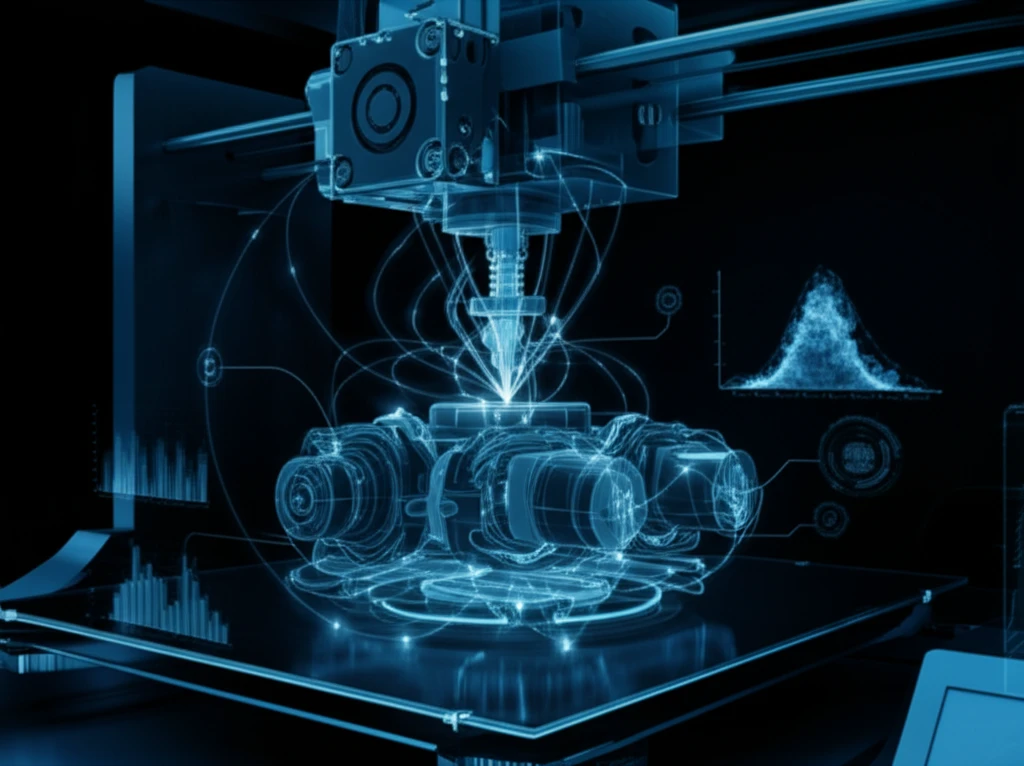
Unlock Precision: Optimizing 3D Printing for Superior Parts
"How Combining Statistical Analysis Techniques Can Enhance Stereolithography Processes and Boost Part Quality"
In today's fast-paced manufacturing landscape, the demand for rapid prototyping and product customization is higher than ever. 3D printing, particularly stereolithography, has emerged as a game-changing technology, allowing for the creation of complex parts with unprecedented speed and flexibility. However, achieving consistent high-quality results can be challenging, as the stereolithography process involves numerous parameters that can significantly impact the final product.
The key to unlocking the full potential of stereolithography lies in optimizing these process parameters to achieve the desired mechanical and physical properties. Traditionally, this optimization process can be time-consuming and resource-intensive, often relying on trial-and-error approaches. But, recent research is offering a more streamlined, data-driven methodology.
This article delves into a powerful approach that combines Grey Relational Analysis (GRA) with Principal Component Analysis (PCA) to optimize stereolithography processes. We'll explore how this innovative technique can enhance part quality by identifying the optimal combination of process parameters, leading to improved tensile strength, flexural strength, impact strength, and density. Whether you're a seasoned engineer or new to 3D printing, this guide provides practical insights into achieving superior part quality through optimized stereolithography.
Decoding GRA and PCA: A Powerful Optimization Duo

To optimize the stereolithography process, researchers are turning to a combination of statistical techniques: Grey Relational Analysis (GRA) and Principal Component Analysis (PCA). This approach offers a systematic way to identify the ideal settings for various process parameters, ensuring high-quality parts.
- Grey Relational Analysis (GRA): This method is particularly useful when dealing with complex systems where some information is incomplete or uncertain. GRA helps to determine the relationships between different process parameters and the desired quality characteristics (e.g., tensile strength, flexural strength). It assigns a 'grey relational grade' to each parameter combination, indicating its overall performance.
- Principal Component Analysis (PCA): PCA is a statistical technique used to reduce the dimensionality of data by identifying the most important variables. In the context of stereolithography, PCA helps to evaluate the weighting values corresponding to various performance characteristics. This ensures their relative importance is properly and objectively considered.
The Future of 3D Printing: Precision and Efficiency
The integration of Grey Relational Analysis and Principal Component Analysis represents a significant step forward in optimizing stereolithography processes. By providing a data-driven approach to parameter selection, this technique empowers manufacturers to achieve superior part quality with greater efficiency.
As 3D printing continues to evolve, methodologies like GRA and PCA will play an increasingly vital role in unlocking the technology's full potential. These advancements pave the way for more consistent, reliable, and high-performance parts across a wide range of industries.
The ability to fine-tune stereolithography processes opens up exciting possibilities for innovation and customization. Whether it's creating lightweight components for aerospace or developing intricate medical devices, optimized 3D printing is poised to transform the way we design and manufacture products.
